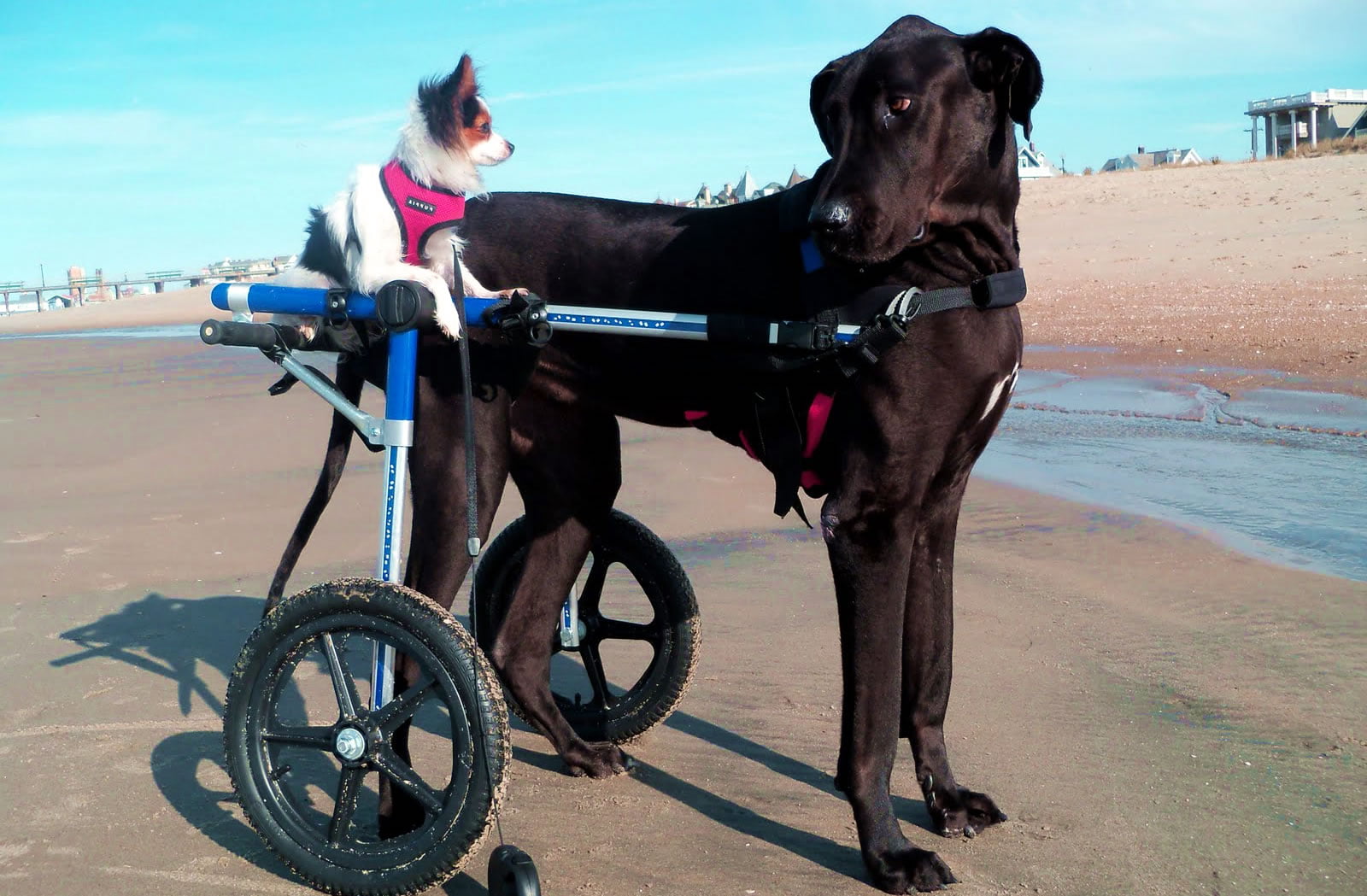Damage to the spinal cord, whether it occurs spontaneously or results from an accident, can cause loss of voluntary muscle movement, changes in spinal reflexes or muscle tone, muscle shrinkage, and loss of touch and
pain sensations. This damage may be irreparable.
Paralysis
Paralysis is often caused by traumatic spinal cord injury from road traffic accidents or falls, gunshot wounds, or from intervertebral disc disease (see opposite). Partial paralysis affecting the hindquarters is more common than complete paralysis. Traumatic paralysis is treated with methylprednisolone intravenously, but, in most cases, surgery will also be necessary. Damage to a peripheral nerve, caused by a car accident or any other trauma in which a leg is jerked away from the body, can bring about loss of sensation in the muscles served by that nerve, and eventual paralysis. While in some cases it may be necessary to amputate the injured limb, a surgical procedure to transpose muscle attachments and produce a stiff, straight leg is sometimes a successful alternative.
Intervertebral Disc Dsease
The fibrous tissue that separates the intervertebral discs from the spinal cord (see above) can degenerate and rupture, causing pain and paralysis. For most dogs, corticosteroids are beneficial when given on the same day that injury occurs. After that, the most important part of treatment is rest, usually for at least two weeks.
Wobbler syndrome
This serious condition, also known as cervical spondylomyelopathy, occurs most frequently in young Great Danes and young to middle-aged Dobermans. It causes progressive loss of coordination in the hind legs, caused by instability of the vertebrae in the neck that results in compression and damage to the spinal cord. If untreated, partial paralysis may spread to the front legs. Wobbler syndrome responds best to early surgical correction.
Chronic Myelopathy
Primarily affecting German Shepherd dogs, although it does occur in other large breeds, chronic degenerative radiculomyelopathy (CDRM) is a debilitating disease that causes partial paralysis. Starting as early as six years of age, an affected dog slowly develops a painless lack of coordination of the hind legs. Over the following years, weakness evolves into partial paralysis, but pain perception and voluntary control over urinating and defecating remain intact. Unfortunately, while many treatments have been attempted, none have been discovered yet that slow down or reverse CDRM. Weight control and routine daily exercise are valuable, however, to ensure the best possible muscle tone.

Leave A Comment